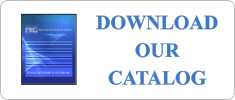Print:$80.00
PDF:$89.50
The study presents data from 90 libraries –
corporate, legal, college, public, state, and non-profit
libraries – about their database licensing practices.
More than half of the participating libraries are from the
USA, and the rest are from Canada, Australia, the UK, and
other countries. Data is broken out by type and size of
library, we well as for overall level of database
expenditure. The 100+ page study, with more than 400
tables and charts, presents benchmarking data enabling
librarians to compare their library’s practices to peers
in many areas related to licensing. Metrics provided
include: percentage of licenses from consortiums,
spending on consortium dues, time spent seeking new consortium
partners, number of consortium memberships maintained; growth
rate in the percentage of licenses obtained through
consortiums; expectation for consortium purchases in the
future; number of licenses, growth rate in the number of
licenses, spending on licenses for directories, electronic
journals, e-books, and magazine/newspaper databases; future
spending plans on all of the above; price inflation
experienced for electronic resources in business, medical,
humanities, financial, market research, social sciences and
many other information categories; price inflation for
e-books, electronic directories, journals, and
newspaper/magazine databases; percentage of licenses that
require passwords; percentage of licenses that have
simultaneous access restrictions; spending on legal services
related to licenses, percentage of libraries that have
threatened to sue a database vendor; percentage of libraries
that have been threatened with suits by database vendors;
number of hours spent in reviewing license contracts;
percentage of contracts that require contract terms be kept
secret; level of awareness of the terms of other libraries
contracts; contract terms regarding inter-library loan;
success rates in seeking changes in license contracts;
percentage of libraries that have paid an article processing
fee or received a rebate as compensation for open access;
number of articles obtained through digital repositories;
planned development of digital repositories; use of
journal archives provided for free after an embargo period;
use of Google Scholar; percentage that report loss of
perpetual access to journal archives; percentage of journal
contracts that guarantee perpetual access; use of grants for
financing databases; use of charge backs and departmental
contributions to finance database licensing; percentage that
outsource copyright clearance; plans for the elimination of
paper-base course reserves; expectations for renewing current
database subscriptions; number of databases tried on a free
trial basis; rated reliability of usage statistics obtained
from database vendors; staff time spent on service
interruption issues.
Availalble 2008



